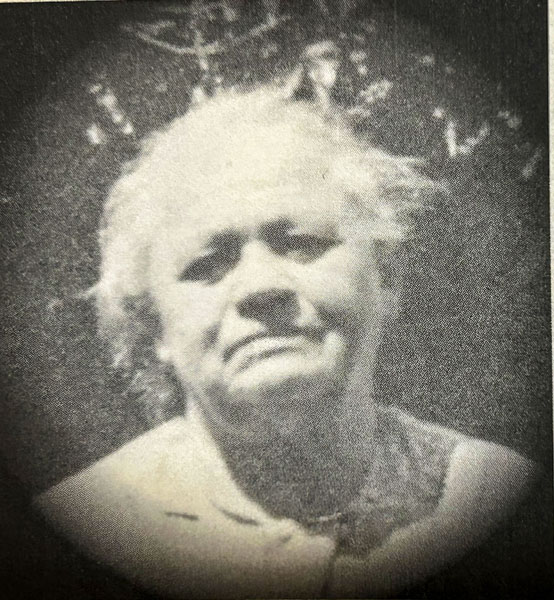The Sedalia Perrys: Woes and blessings

Sarah Minerva Perry, 1853-1929.
Worn down by dismal life opportunities available to them in Somerset, England, Elizabeth Ann Dowden and her husband James Perry packed up, leaving the Isles in 1848. With sons James Dowden (James D.) and George, and 9-year-old daughter Elizabeth in tow, the family took passage on a ship to the United States.
No luxury liner, passengers were given a bucket to wash their clothes. The voyage was battered repeatedly by vicious storms, one so bad that the ship’s captain desperately asked all passengers to get on their knees to pray. After eleven weeks of seaborne hell, the Perrys arrived in New York.
James first found meager work in Delaware as a gardener, renting land to grow his vegetables. Onions were his thing. A losing proposition, the Perrys moved restlessly on, through New Jersey, Cleveland, Davenport and then St. Louis. In 1861, utterly exasperated with their bad luck, they relocated once more to Denver at the urging of their sons.
James D. and George were impatient, especially George. In the late 1850s, he had already married and was living in Colorado, exploiting a mining claim in Tarryall. Heavily influenced by his brother, James D. later bought George’s mining claim. It never did pan out.
The brothers made Sedalia their home in the early 1860s. James D. first homesteaded south of Denver and later bought Mt. Hope Farm in Sedalia, some 230 acres. Today, it sits one and a half miles northwest of Bud’s Café & Bar.
The elder Perrys decided to go west as well. Having known nothing but misery, they traveled by oxen-drawn team in the spring of 1861. Tragedy stalked their pioneer party seemingly at every turn. Under harsh, disease-filled conditions, James took ill and died. Though buried near the Blue River in Nebraska, after three attempts by James D. to find and repatriate his remains, his father’s final resting place remains a mystery to this day.
Elizabeth pushed on and survived. With the help of her sons, she cobbled together a small homestead on East Plum Creek. Beginning with a log cabin fashioned with the crudest of hand tools, she expanded it later into a two-story home – the original cabin remaining as her living room. She passed away there at age 78.
After the Perrys deaths, spirits are said to have visited the cabin, the most famous being an elder woman in high-button shoes (perhaps Sarah herself?) who would stand at the foot of the beds and walk the stairwells.
Little more is recorded about George, though he and his wife from Michigan, Walse, brought five children into the new West. Later on, they relocated to Arapahoe County and George is believed to have been buried in Cañon City.
James D. had a far higher profile. According to friends, he was an upstanding man who lived by the Golden Rule. Gregarious and indisputably the most fruitful, he and his wife Sarah Minerva Jerome delivered eight children, all schooled in Louviers.
A noted cattleman, James D. registered the second breed of cattle in the county. Like his dad, he also had a keen sense of what vegetables could be successfully grown in the rich soils of East Plum Creek. It was common to see either Sarah or him hauling a wagon load of vegetables to market in Sedalia, and occasionally, even further up to the lower goldfields of Georgetown.
Ute Chief Colorow came to be a good family friend. Occasionally joining the Perrys for dinner, he exhibited a huge appetite and would eat it all sitting cross-legged on the floor.
By Joe Gschwendtner; photo from Remarkable Ladies of Sedalia by Sedalia Historic Museum and Gardens